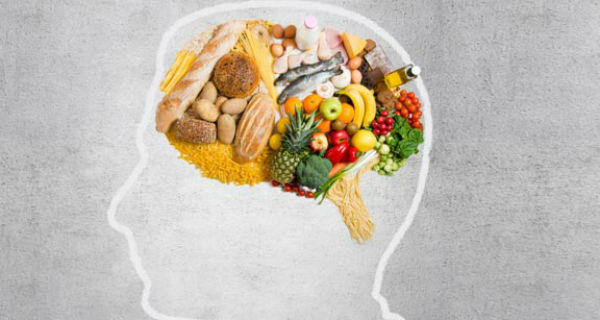Calories: The Key to Weight Control
Nutrition is an ever-changing science with one consistent message: If you are above a healthy body weight, lose weight. The World Health Organization, the National Academy of Sciences, and many other organizations consider weight loss to be the first line of action for decreasing the incidence of diseases such as high blood pressure, cardiovascular disease, and diabetes. In 2007, the American Diabetes Association stated in its clinical practice recommendations that for people who already have Type 2 diabetes, even moderate weight loss (on the order of 5% of body weight) can improve insulin sensitivity, lower fasting blood glucose levels, and reduce the need for medication.
Yet, while the message promoting weight reduction for those who are overweight is quite clear, there is no consensus on the best way to achieve weight reduction, even among health professionals. There is evidence that supports high-protein, low-carbohydrate diets, and there is evidence to support low-protein, high-carbohydrate diets. But no matter what approach is recommended, there is one thing that is clear: To reduce body weight, you must reduce the number of calories consumed.
According to the North American Association for the Study of Obesity and the National Heart, Lung, and Blood Institute’s Obesity Education Initiative, for weight loss to occur, caloric intake should be reduced by 500–1,000 calories per day from what a person is currently consuming. Eating 500 calories less per day will result in a weight loss of 1 pound per week, while eating 1,000 calories less per day will result in a weight loss of 2 pounds per week. However, it’s important not to cut back on calories too much. In general, for weight reduction, the Obesity Education Initiative recommends that most women consume at least 1,000–1,200 calories per day, and that men and women who weigh more than 165 pounds consume 1,200–1,500 calories per day.
What are calories?
Technically, a calorie is a unit of energy. One calorie from food is the amount of energy needed to raise the temperature of 1 gram of water, at 15°C, by 1°C. In more practical terms, calories in food provide the energy needed for humans (and other animals) to breathe, eat, sleep, walk, and perform other activities. The number of calories a person needs to maintain his body as is (with no weight gain or loss) depends on his basal metabolic rate, or the amount of energy he expends at complete rest, as well as the number of calories he burns through activity. To find out approximately how many calories you need each day, see “How Many Calories Do You Need?”
Once you know how many calories you need each day to maintain your body mass — or to bring about weight loss or weight gain — you need to know the calorie values of the foods you eat. Scientists use what’s called a bomb calorimeter to determine the calorie composition of foods. This device consists of a closed container in which a weighed food sample is burned in an oxygen atmosphere by ignition with an electric spark. The container is immersed in a known volume of water, and the rise in the temperature of the water is noted to determine how much heat is generated.
Energy values of food can also be determined using chemical tests and analyses of recipes to estimate a product’s digestible components. This is how the values on food labels are arrived at, because burning food overestimates the amount of energy the human digestive system can extract from the food.
Luckily, consumers don’t have to burn food samples or perform chemical tests to find their food’s calorie content. This information can be found on the Nutrition Facts panel found on most packaged food labels. Many nutritionists also refer to handbooks such as Food Values of Portions Commonly Used by Bowes and Church. And information on the calorie and nutrient content of many foods can be found online at a number of Web sites, including that of the USDA Nutrient Data Laboratory, www.nal.usda.gov/fnic/foodcomp/search, as well as at www.thedailyplate.com, www.fitday.com, and www.calorieking.com.
Calorie components
While the number of calories in your diet ultimately determines whether you gain or lose weight, the nutrients in food deserve some attention, too. After all, you need nutrients keep your body functioning well, and when you reduce your calorie intake to lose weight, it becomes more important than ever to make sure you’re choosing foods that provide both the macronutrients — carbohydrate, protein, and fat — as well as the micronutrients — vitamins, minerals, and other trace elements — that you need.
Carbohydrate
Carbohydrate is found in grains and foods made from grains, dried beans and legumes, sugars and syrups, milk products, fruits, and vegetables. Foods that contain carbohydrate provide energy, vitamins, minerals, and in some cases, fiber. Because carbohydrate has a direct effect on blood glucose level, there is much debate over how much carbohydrate is appropriate in the diets of people with diabetes. Some people choose to eat very little carbohydrate; others take other dietary approaches.
However, no matter how much carbohydrate you choose to include in your diet, you will usually get more out of it by choosing foods that are unrefined or only minimally processed. Whole or minimally processed grains, in particular, tend to contain more fiber, vitamins, and minerals than highly processed grains and grain products. Simply prepared fresh or frozen fruits and vegetables also generally have more nutrients and less added sugar, salt, and fat than canned or otherwise processed fruits and vegetables.
Getting enough fiber in your diet is important not only for bowel function but also for its positive effects on blood glucose and blood cholesterol levels. Eating high-fiber foods can also help you feel full sooner, so you may feel more satisfied on fewer calories.
Even when you’re making healthy, high-fiber choices, however, keep in mind that whole-grain bread, high-fiber cereal, and brown rice still contain calories. You can gain as much weight eating too much whole wheat pasta as you would eating too much regular pasta. Read the labels when you choose packaged foods, particularly those that boast of their nutrition virtues. They may be natural, fat-free, and high in protein, but they may also be high in calories.
Protein
Protein is found in meat, fish, chicken, eggs, dried beans and legumes, dairy products, soy products, nuts and nut butters, and grains. Small amounts of protein are also found in vegetables. Protein is needed by the body to build and repair tissues. Protein also provides energy, and foods high in protein provide varying amounts of iron, zinc, and B vitamins.
Like the debate over how much carbohydrate should be in the diets of people with diabetes, there is also debate over the appropriate amount of protein in the diets of people with diabetes. According to the American Diabetes Association, there’s no reason for people who have diabetes and normal kidney function to consume other than the usual protein intake of most Americans, which is 15% to 20% of total daily calories. However, the Joslin Diabetes Center guideline for overweight and obese adults with Type 2 diabetes or prediabetes recommends that about 20% to 30% of calories come from protein, unless a person has any signs of kidney disease. The Joslin recommendation is based on research suggesting that dietary protein aids in the sensation of fullness after meals and that low-protein meal plans are associated with increased hunger.
No matter how much protein you choose to include in your diet, it’s important to remember that most high-protein foods also contain fat, which provides a lot of calories. To get the most protein per calorie, therefore, it’s best to choose leaner cuts of meat and poultry and low-fat or fat-free dairy products. Getting more protein from dried beans and legumes can also help keep your fat and calorie intake low while raising your fiber intake — but don’t forget to count the carbohydrate. For a look at how many calories are in some common protein sources, see “Choosing Leaner Proteins.”
Fat
Fat is found in oils, meat, poultry, fish and other seafood, dairy products, nuts and nut butters, seeds, and a few fruits such as coconuts and avocados. Grains also naturally contain small amounts of fat. Fat plays many important roles in the body, including providing energy and essential fatty acids, which are necessary for good health. Dietary fat aids in the absorption of the fat-soluble vitamins A, D, E, and K, and it may help satisfy your appetite by making you feel full after eating.
Because fat contains more than twice as many calories per gram as carbohydrate or protein, raising or lowering the amount of fat in your diet can have a dramatic effect on the overall number of calories in your diet. At any calorie level, however, minimizing the amount of saturated and trans fat in your diet and choosing fats that are high in monounsaturated and polyunsaturated fatty acids is recommended for heart health.
Saturated fat raises low-density lipoprotein (LDL, or “bad”) cholesterol levels in the blood, which raises the risk of developing heart disease. Trans fat both raises LDL cholesterol and lowers high-density lipoprotein (HDL, or “good”) cholesterol levels. Foods high in saturated fat include meat, poultry, dairy products, coconut and coconut oil, palm oil, and palm kernel oil. Foods high in trans fat include any product made with or cooked in partially hydrogenated vegetable oils.
Monounsaturated and polyunsaturated fatty acids, as well as a type of polyunsaturated fat called omega-3 fatty acids, appear to be good for heart health when they are consumed in place of saturated and trans fat. Foods high in monounsaturated fat include most nuts, canola oil, and olive oil. Foods high in polyunsaturated fat include walnuts, soybean oil, and corn oil. Foods high in omega-3 fatty acids include fatty, cold-water fish and flaxseed.
Even as you choose healthy fats, however, keep in mind that eating too many trans-fat–free chips, handfuls of almonds, or servings of salmon can still add up to weight gain if you consume more calories than your body needs.
Getting enough calcium
Getting enough calcium in your diet while also limiting your calorie intake can be a challenge. The body can only absorb about 300–500 milligrams of calcium at a time, so calcium-rich foods must be spread out over the day. Also, not all of the calcium in food is absorbed; some is always lost through digestion, so consuming a total of, say, 1,000 milligrams (mg) of calcium may not actually result in your body getting 1,000 mg of calcium a day. (Men and women aged 19–50 are advised to get 1,000 mg of calcium per day; those over 50 are advised to get 1,200 mg.)
While calcium supplements are a possibility, calcium from food appears to have some advantages, including maintaining higher bone mineral density. So to get your calcium without overdoing the calories, choose fat-free or low-fat dairy products or calcium-fortified soy products, and eat more broccoli, bok choy, collard greens, kale, mustard greens, turnip greens, and okra. Dried figs, dried beans, almonds, and fish with edible bones such as sardines and canned salmon are also sources of calcium.
Getting enough iron
Most Americans who eat meat and poultry regularly are not at risk of iron deficiency. However, there are certain groups who have a higher risk, including women of childbearing age, pregnant women, toddlers, teenage girls, people with intestinal problems that lead to reduced absorption of nutrients, vegetarians, and athletes who do not consume enough iron-rich foods. People who need more iron — but not necessarily more calories — should make sure their diet is rich in low-fat cuts of meat and poultry, low-sugar fortified cereals, dried beans, dried fruit, and green, leafy vegetables. Vegetarians should be aware that the body will absorb more iron from plant sources of iron if the iron-containing food is eaten along with a food that is high in vitamin C.
Alcohol
Alcohol is not necessary for good health, although there is some evidence that moderate consumption has health benefits. For the most part, however, people consume alcohol for enjoyment. Alcohol provides 7 calories per gram, or about 100 calories per 5-ounce glass of wine or 1½-ounce serving of liquor. The calories from alcohol are often called “empty calories” because they provide little in the way of nutrients, but that doesn’t mean they can’t contribute to weight gain. Also, some alcoholic beverages, including beer and mixed drinks made with juices, syrups, or caloric soft drinks, contain carbohydrate and the calories provided by the carbohydrate.
Some ways to keep your calorie intake lower when drinking alcohol include drinking light beer instead of regular beer (a serving of beer is 12 ounces), having wine instead of sweet drinks made with caloric mixers, or using unsweetened mixers such as diet soft drinks instead of caloric ones. However, because drinking alcohol raises the risk of developing hypoglycemia, it is recommended that you eat something containing carbohydrate — such as pretzels, crackers, or fruit — when having a drink. Some people believe that having some protein or fat in the snack is helpful, too.
Many major health organizations, including the American Diabetes Association, recommend that for health reasons, women consume no more than one alcoholic beverage per day and men consume no more than two. When you consider the number of calories in a single drink as well as the number of calories in the accompanying food needed to prevent hypoglycemia, this recommendation makes good sense for weight control, too.
Burning calories
Taking in fewer calories is one factor in losing excess weight; burning more through physical activity is important, too. At a minimum, most adults should be physically active for at least 30 minutes most days of the week to improve their health and well-being. To prevent weight gain and maintain weight loss, however, 60–90 minutes of physical activity per day may be required. People who are not currently active or who get less than 30 minutes of activity per day should build up to 30 minutes gradually. The 30 minutes of activity need not be done all at once; being active for 10 or 15 minutes at a time is OK, too, and has the same benefits.
Both aerobic activities, such as brisk walking, and resistance exercises, such as lifting weights or doing calisthenics, have health benefits and burn calories. The column entitled “Burning Calories” shows how many minutes of various activities it takes to burn 150 calories. When you consider that you need to burn 3500 calories more than you consume to lose a pound, however, it becomes clear why increasing your activity level without decreasing your calorie consumption is unlikely to result in much weight loss. Nonetheless, physical activity has been found to play a meaningful role in weight maintenance, and it has numerous other positive effects, including increased insulin sensitivity (which usually translates to better blood glucose control) and often improved mood.
Counting your calories
Many people are unaware of how many calories they eat each day, even if they usually follow a meal plan. Having just a couple of extra mouthfuls of food a day while preparing meals, regularly sampling treats brought in by colleagues at work, or treating yourself to more than the occasional fancy coffee drink can add up to gradual pounds gained.
One effective way to become more aware of every calorie you put in your mouth is to write down everything you eat or drink for several days (or longer, if you can). Include everything, even the milk you add to your coffee and any ingredients used in the preparation of foods, such as oil or bread crumbs.
Sometimes just seeing your total intake written down can show you where the extra calories are creeping in and where some could be cut. However, if you don’t see a lot of snacks or foods not on your meal plan, you may need to get out the measuring cups and spoons or a
food scale to check the portion sizes of the foods you eat. When you’re not measuring portion sizes, it’s easy for 1 cup of cereal to turn into 1¼ cups or for 2 tablespoons of peanut butter to turn into 3 tablespoons. Look at the labels on the packaged foods you buy, too; a manufacturer may have increased the size of an item or changed the recipe so that it contains more calories.
While keeping a food diary is helpful for many, it’s usually not necessary to count every calorie every day for the rest of your life. Once you have a good idea of the number of calories you want to eat each day, it may be easier to think in terms of numbers of portions of food from each food group. You might choose to use the food groups on www.ChooseMyPlate.gov (grains, vegetables, fruits, oils, milk, and meat and beans), or you might choose to use the food groups in the Diabetes Food Pyramid (grains, beans, and starchy vegetables; vegetables; fruits; milk; meat, meat substitutes, and other proteins; and fats, oils, and sweets). You can also substitute healthful alternatives for calorie-laden foods. Check out “Food Substitutions To Save Calories” for more information.
Since working out a nutritious meal plan that provides adequate nutrients, helps control your blood glucose, and enables you to lose weight can be a challenge, consider working with a registered dietitian who has experience with diabetes meal plans. Bring your food diary to your appointments so the dietitian can help you design a plan that takes your likes, dislikes, and any problem areas into account.
-
7 ways to get the best of your cardio regime
-
A Healthy Amount of Calories
Eating too much or too little can have dire consequences foryour healt
-
Why do we crave sweets?
-
Here’s the secret to Bipasha’s sexy, toned back!
Word
-
Trying to lose weight with a gluten-free diet? Read this
-
What is greencoffee bean extract?
Highlights Green coffee beans are unroasted coffee
- DON'T MISS
- Fitness Plan Day #173– Walk 10,000 steps daily to lose weight
- Expert opinion: The correct way to lose weight
- Supercharge your cardio workout
- Did you know ghee can help you lose weight?
- How honey, cinnamon and lemon in warm water can help you lose weight
- 8 foods to help you lose belly fat
- How to lose weight
- Dieting for weight loss
- 8 dance workouts to help you lose weight
- Diet for the marathon: Expert tips




